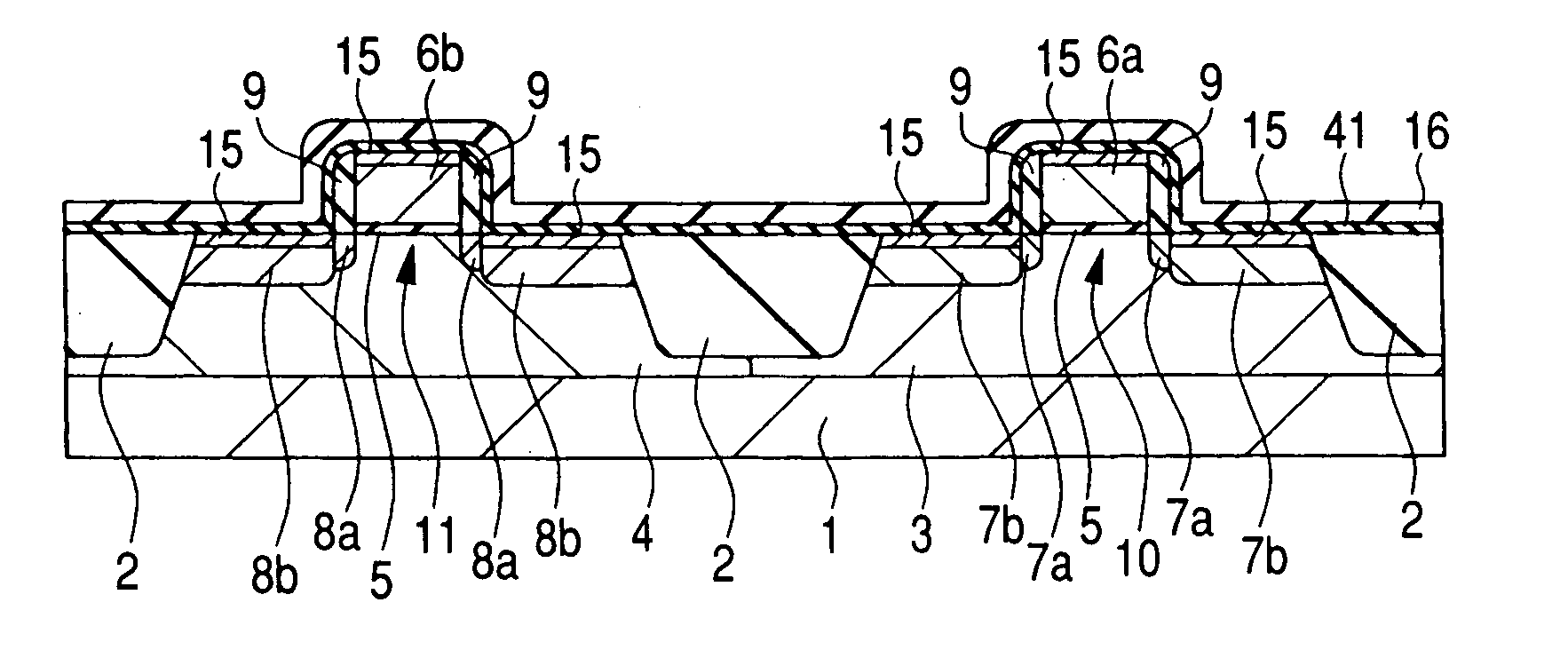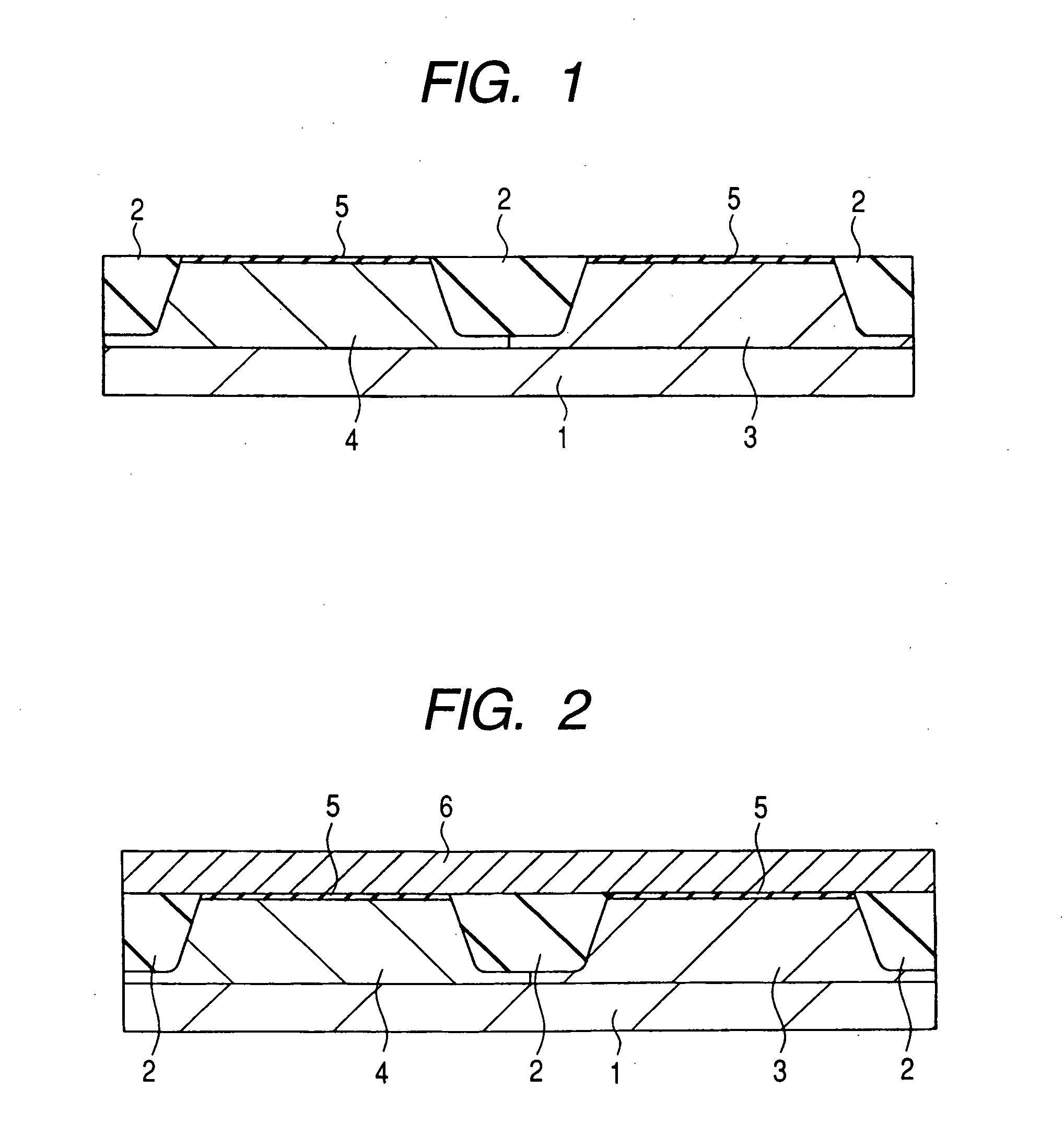Manufacturing method of semiconductor device
- Summary
- Abstract
- Description
- Claims
- Application Information
AI Technical Summary
Benefits of technology
Problems solved by technology
Method used
Image
Examples
embodiment 1
[0046] A semiconductor device according to this Embodiment and the manufacturing steps thereof will be described with reference to the accompanying drawings. FIG. 1 is a fragmentary cross-sectional view of a semiconductor device, for example, a CMISFET (Complementary Metal Insulator Semiconductor Field Effect Transistor), according to one embodiment of the invention, as seen during a manufacturing step.
[0047] As illustrated in FIG. 1, a semiconductor substrate (semiconductor wafer) 1, which is made of, for example, a p type single crystal silicon having a specific resistance of from 1 to 10 Ωcm, is prepared. Over the main surface of the semiconductor substrate 1, an element isolation region 2 is formed. The element isolation 2 is made of silicon oxide and it can be formed, for example, by STI (Shallow Trench Isolation) or LOCOS (Local Oxidization of Silicon).
[0048] A p-well 3 and an n-well 4 are each formed in the semiconductor substrate 1 to a predetermined depth from the main su...
embodiment 2
[0087]FIG. 22 is a flow chart of a manufacturing process showing steps in the manufacture of a semiconductor device according to another embodiment of the invention. The manufacturing process is substantially similar to that of Embodiment 1 until the second annealing (second heat treatment) of Step S4. A description of the manufacturing steps prior to the second annealing of Step S4 is therefore omitted, and those steps performed thereafter will be described next.
[0088] In this Embodiment, the second wet cleaning of Step S5 of Embodiment 1 is replaced with plasma treatment using ammonia (NH3). After the second annealing of Step S4 similar to Embodiment 1, plasma treatment is performed (Step S5a) in this Embodiment. Plasma treatment using ammonia (NH3) is preferred. Nuclei 31 as described above can be chemically or physically removed from the surface of the CoSi2 layer 15 by this plasma treatment (ammonia plasma treatment).
[0089] After the plasma treatment of Step S5a, a silicon ni...
embodiment 3
[0093]FIG. 23 is a flow chart of a manufacturing process showing steps in the manufacture of a semiconductor device according to a further embodiment of the invention. The manufacturing process is substantially similar to that of Embodiment 1 until the second annealing (second heat treatment) of Step S4. A description of the manufacturing steps up to the second annealing of Step S4 is therefore omitted, and those steps provided thereafter will be described next.
[0094] In this Embodiment, the second wet cleaning of Step S5 according to Embodiment 1 is replaced by sputter etching (sputter etch). More specifically, after the second annealing of Step S4 similar to that of Embodiment 1, sputter etching is performed by using, for example, argon (Ar) (Step S5b) in this Embodiment. Nuclei 31 as described above on the surface of the CoSi2 layer 15 can be removed physically by this sputter etching. The nuclei 31 exist more in the vicinity of the surface of the CoSi2 layer 15 than inside of t...
PUM
 Login to View More
Login to View More Abstract
Description
Claims
Application Information
 Login to View More
Login to View More - R&D
- Intellectual Property
- Life Sciences
- Materials
- Tech Scout
- Unparalleled Data Quality
- Higher Quality Content
- 60% Fewer Hallucinations
Browse by: Latest US Patents, China's latest patents, Technical Efficacy Thesaurus, Application Domain, Technology Topic, Popular Technical Reports.
© 2025 PatSnap. All rights reserved.Legal|Privacy policy|Modern Slavery Act Transparency Statement|Sitemap|About US| Contact US: help@patsnap.com



